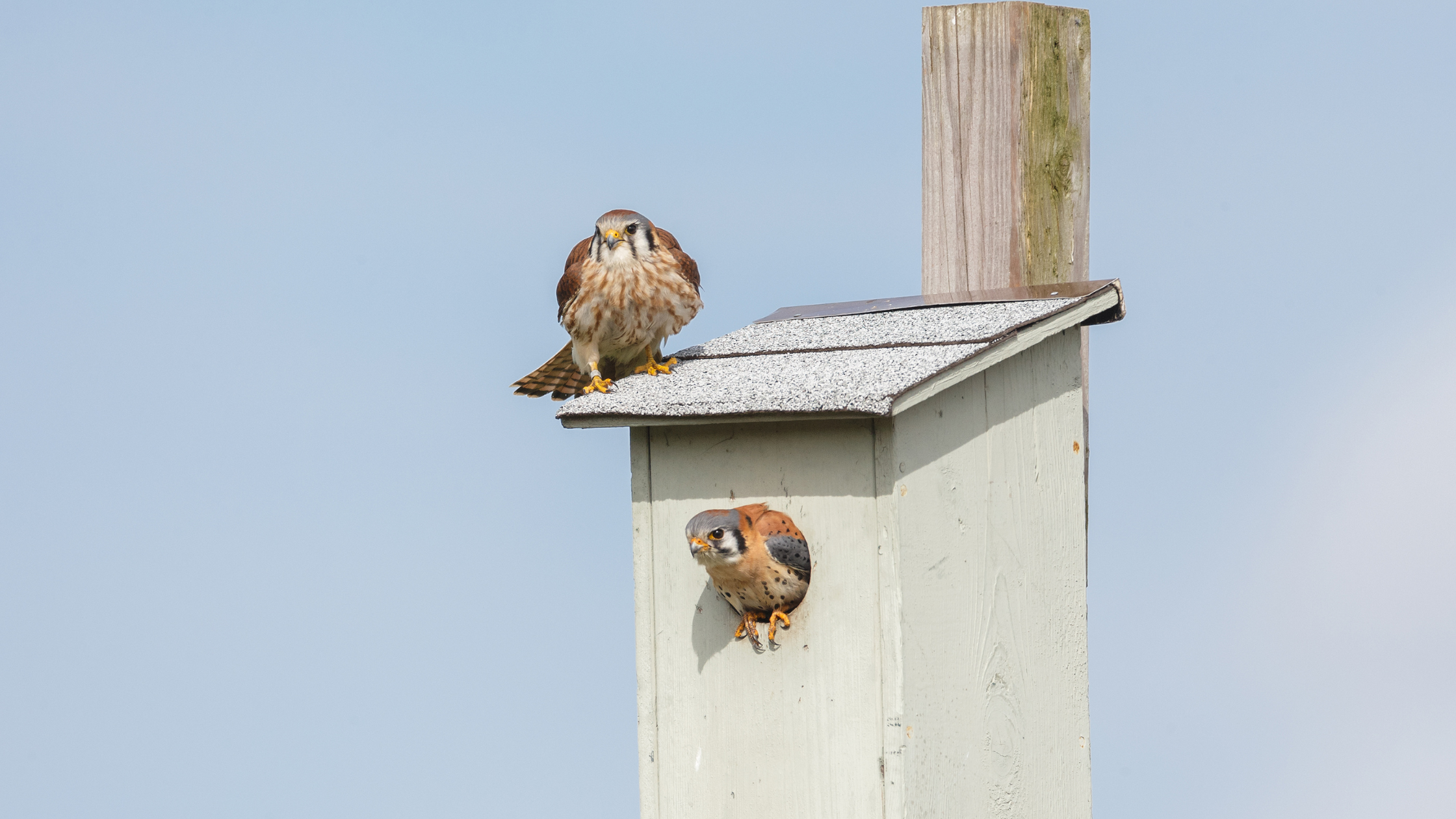
Barn Owl's Role in American Kestrel Research: An Interview with Stuart Smith
Introduction
Could you briefly introduce yourself and your organization?
We work under the auspices of the local Audubon Society with about 40 volunteers who are monitoring about 200 nest boxes that have been placed around Washington state. Periodically, they monitor these nesting boxes for birds. Primarily we are interested in American Kestrels and we visit nest boxes four or five times a season. We really wanted monitoring between these visits.
Can you give an overview of your research on American Kestrels? What are the main goals and objectives?
American Kestrels are the smallest native North American raptor and their numbers are in decline. If this trend continues they will be placed on the endangered species list. Our goal is to determine what impacts the population and how to reverse this damaging pattern to save the species.

American Kestrel nesting.
Use of Barn Owl Tech Cameras
What led you to use Barn Owl cameras in your research?
When I was doing the original search at the beginning of last year, I looked up outdoor cameras which had cell capability and external power sources. At the time, Barn Owl was the only result that my internet search provided.
What specific features of Barn Owl cameras make them suitable for studying Kestrels?
Solar power and cellular reliability, and the ReachCam magnifying lens allows excellent detailed photos.
Can you describe how these cameras are set up and used in the field?
The cameras are mounted at the top of a nesting box which allows undisturbed monitoring of the nest boxes between volunteer visits.

What kind of data do these cameras provide, and how do you analyze it?
Photos of all stages of Kestrel development from egg to adult. This provides valuable information about the nesting habits and behaviors of these birds. We also see what is affecting the nest boxes such as predators and disease.
“We have a number of scientists and world renowned experts on raptors overseeing this project. This provides the perfect laboratory for our studies and we intend to continue for many years. Barn Owl provides real time views, a more complete picture, which is helping our research - and the species.”
Discoveries in Kestrel Nesting Behavior
What are the previously unknown Kestrel nesting behaviors that your team has discovered?
We theorized the food chain impacted Kestrels. Mice and grasshoppers follow food and grain plots, then Kestrels arrive, and then other birds such as woodpeckers create tree hollows. This is where Kestrels nest. We found an area which had plenty of food and adult Kestrels, but no breeding pairs. We determined predatory corvids and raptors would watch the tree hollows and eat the adults. Nest boxes with cameras allow us to keep an eye on breeding pairs, their offspring, and future generations.

Another view of an American Kestrel nesting.
Future with Barn Owl
Would you use Barn Owl for other studies?
There are no other studies planned at this time, however our current project has a long term goal and lifespan. We intend to expand with Barn Owl.
Conclusion
Barn Owl's innovative solutions have been a game-changer, not just for American Kestrel research but for other conservation and agricultural needs. Take the McPhee family, for example—they've been able to expand their farm to 500 acres thanks to Barn Owl's remote monitoring solutions, helping their operations run smoothly. Ranchers are also loving Barn Owl cameras, using them to keep an eye on water tanks and livestock even in the toughest conditions, which helps them manage resources better and take great care of what they care about.
All images courtesy of Stuart Smith.
Share


